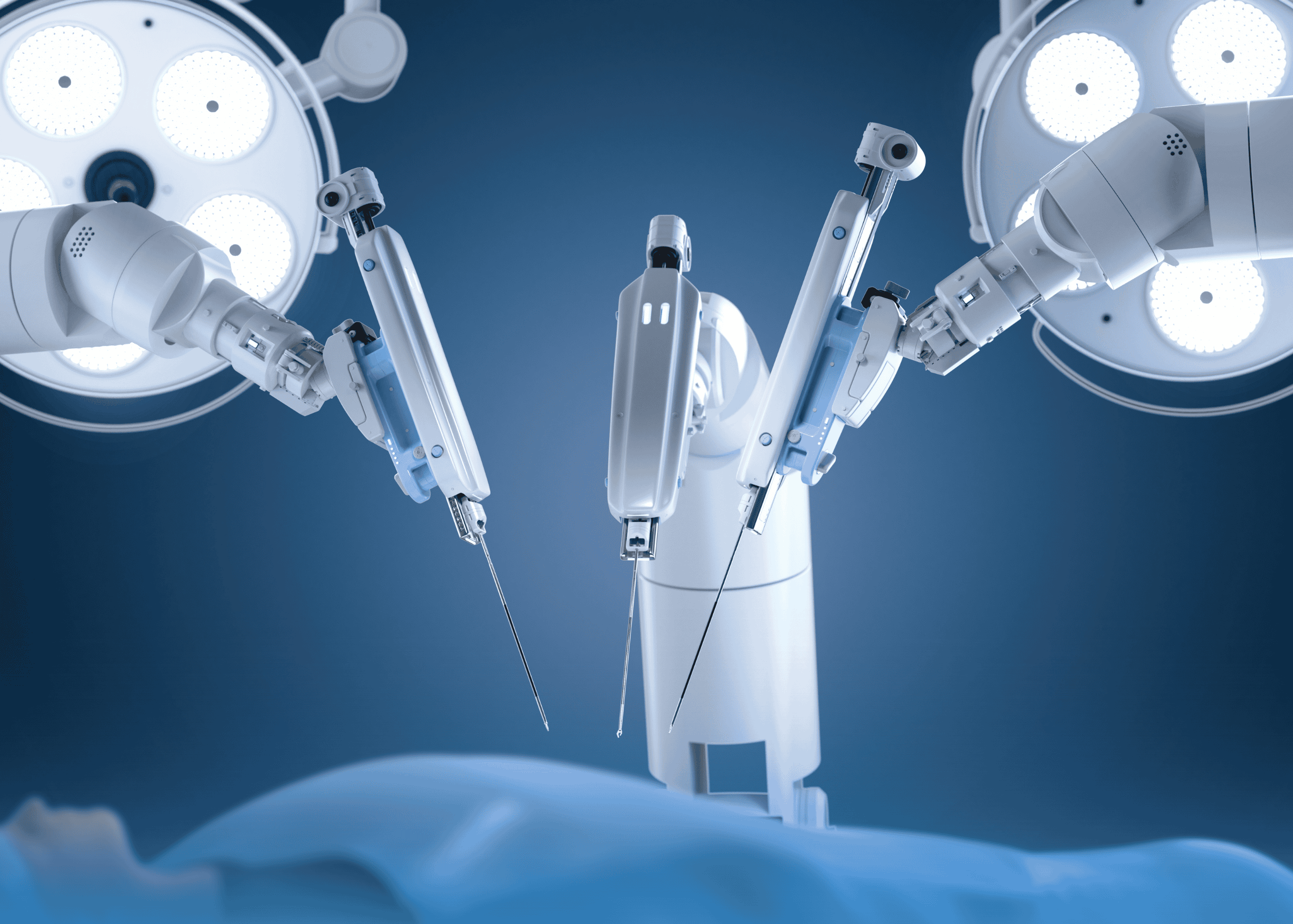Introduction
Burjeel Medical City continues to lead in minimally invasive gynecological procedures with their advanced robotic surgery program. A recent case highlights how the Da Vinci XI Robotic Surgery System is transforming treatment options for women suffering from fibroid-related complications, offering faster recovery and improved outcomes.
Patient History
A 52-year-old patient with no previous medical or surgical history and two normal vaginal deliveries presented with a one-year history of challenging gynecological symptoms. Her primary complaints included irregular bleeding, heavy menstrual periods, persistent headaches, fatigue, and chronic pelvic pain that significantly impacted her daily activities. The severity of her condition had resulted in severe iron deficiency anemia requiring multiple blood transfusions (five units of packed RBCs) and intravenous iron therapy.
Clinical Assessment
Physical examination revealed a palpable suprapubic mass extending to the umbilicus. Speculum examination showed a normal cervix. Comprehensive diagnostic workup included:
- Blood tests showing hemoglobin of 11.00 g/dL and platelet count of 356 X10^3/μL
- PAP smear negative for intraepithelial lesion or malignancy
- Bilateral mammography classified as BI-RADS 1 (normal)
- Normal endometrial biopsy
- MRI pelvis with and without contrast
The MRI findings confirmed an enlarged, anteverted uterus measuring 15 cm x 10.5 cm x 11.2 cm with a normal 7 mm endometrium. The primary pathology was identified as a large posterior wall intramural fibroid (approximately 11.2 x 8.8 x 10 cm) showing heterogeneous enhancement with degenerative changes. Additionally, a small 1.5 x 1 cm submucosal fibroid was noted in the anterior wall.
Surgical Approach
The expert surgical team led by Dr. Aysha Almentheri, Consultant Gynecologist, and Dr. Jafaru A, Consultant Gynecological Oncology Surgeon, performed a robotic radial hysterectomy with bilateral salpingectomy using the Da Vinci XI Robotic Surgery System. Anesthesia was administered by Dr. Baby Thampuru Vamadevan.
The robotic approach offered several key advantages:
- Enhanced 3D visualization of the surgical field
- Greater precision through robotic arm instrumentation
- Minimal incisions resulting in less post-operative pain
- Reduced blood loss
- Faster recovery compared to traditional open surgery
The procedure successfully removed the uterus, fibroids, cervix, and both fallopian tubes, with the specimen weighing 950 grams. Blood loss was limited to 300 ml, and no intraoperative transfusion was required.
Pathology Results
Histopathological examination confirmed:
- Conventional leiomyomata (fibroids) in the myometrium
- Benign endometrial polyp with progesterone-related changes
- Chronic endocervicitis
- Unremarkable fallopian tubes with bilateral small benign para-tubal serous cysts
Robotic Surgical Technology at Burjeel
This case exemplifies the technological capabilities of Burjeel Medical City’s Da Vinci XI Robotic Surgery System, which provides surgeons with enhanced capabilities through advanced robotic arms and HD 3D visualization. The system represents Burjeel Holdings’ commitment to incorporating cutting-edge technology that results in precise, minimally invasive procedures with improved patient outcomes and recovery.
Conclusion
The successful robotic hysterectomy with bilateral salpingectomy demonstrates how advanced robotic technology at Burjeel facilities is transforming women’s healthcare across the UAE and Oman. By providing minimally invasive surgical options for complex gynecological conditions, Burjeel Holdings continues to improve patient experiences and outcomes through technological innovation and surgical expertise.


